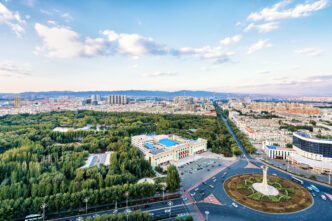The Joint Comprehensive Plan of Action (JCPOA) of 2015, commonly referred to as the Iranian Nuclear Deal, was initially celebrated as a significant diplomatic achievement. However, in 2018, President Donald Trump withdrew the United States from the agreement, labeling it as ineffective and expressing his belief in negotiating a superior deal. This withdrawal heightened US-Iran tensions and posed challenges for European nations trying to preserve the accord.
Recently, Trump announced the commencement of “direct” talks between Washington and Tehran, aiming to establish a new agreement that would prevent Iran from enriching uranium to weapons-grade levels. During a press conference at the Oval Office, with Israeli Prime Minister Benjamin Netanyahu present, Trump revealed plans for a “very big meeting” in Oman to initiate discussions. This meeting could potentially avert a direct military strike by Israel on Iranian nuclear sites.
Experts in international relations express skepticism about the potential outcomes of these talks. The primary concern is the demands that the Trump administration will place on Iran’s nuclear program. Given Iran’s current advanced nuclear capabilities, including 60% enriched uranium, questions arise about the feasibility of reverting to the constraints of the 2015 agreement.
The Stakes of Diplomacy
The consequences of failing to reach a new agreement are significant. During Trump’s first term, the absence of a deal nearly led to open conflict between the US and Iran. In 2019, Trump ordered airstrikes on Iran in response to a drone incident, only to call them off at the last moment. The situation escalated further in 2020 with the assassination of Iranian military leader Qasem Soleimani, which prompted retaliatory missile strikes by Iran on US bases.
Amidst these tensions, Iran faced internal challenges, including the COVID-19 pandemic and economic hardships exacerbated by sanctions. Anti-government protests have become more frequent, fueled by public dissatisfaction with the regime’s policies and actions. Meanwhile, Iran’s regional influence has been tested by conflicts involving its allies, such as Hamas and Hezbollah.
As nuclear talks resume, the disparity in the seriousness of the parties involved is notable. Iran is sending its foreign minister to the negotiations, while Trump’s envoy is a real estate developer with limited diplomatic experience. The primary objective for Iran is the lifting of sanctions to facilitate trade and reintegrate into the global economy.
The Global Context
Trump has not shied away from issuing threats, suggesting dire consequences for Iran if talks fail. His administration’s trade policies have contributed to a global economic crisis, affecting oil prices and further straining Iran’s already struggling economy. Inflation and currency devaluation pose additional challenges for the Iranian government.
Beyond the immediate economic impact, the geopolitical landscape is shifting. The US’s reduced commitment to its allies’ security has sparked discussions on nuclear proliferation. Countries like Poland are contemplating developing independent nuclear capabilities in response to perceived threats from Russia and China.
Understanding the Impact
- Heightened tensions between the US and Iran could lead to instability in the Middle East, affecting global oil prices and energy security.
- The economic sanctions on Iran may impact global trade and economic relations, particularly for countries engaged in commerce with Iran.
- Potential military conflicts could disrupt international travel and tourism, affecting industries reliant on stable geopolitical conditions.
- The resumption of nuclear talks may influence public opinion on nuclear proliferation and international diplomacy.
- Regional conflicts and economic challenges could lead to humanitarian issues, necessitating international aid and support for affected populations.








